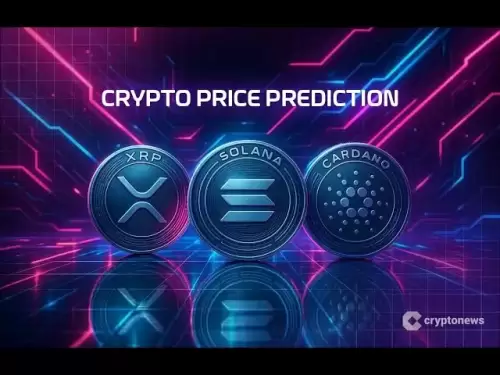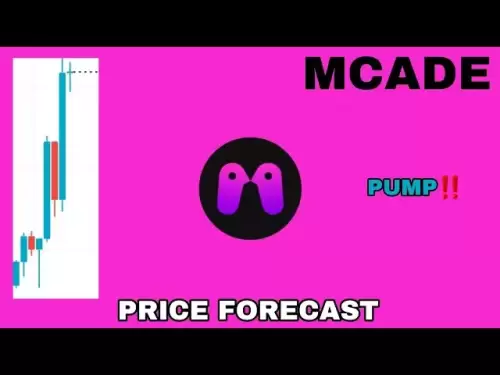-
 Bitcoin
Bitcoin $118,209.3536
1.16% -
 Ethereum
Ethereum $3,151.7546
5.98% -
 XRP
XRP $2.9277
2.35% -
 Tether USDt
Tether USDt $1.0000
0.00% -
 BNB
BNB $689.7099
1.26% -
 Solana
Solana $163.4270
1.91% -
 USDC
USDC $1.0000
0.02% -
 Dogecoin
Dogecoin $0.1983
3.74% -
 TRON
TRON $0.3008
0.51% -
 Cardano
Cardano $0.7435
2.86% -
 Hyperliquid
Hyperliquid $47.6547
-0.48% -
 Stellar
Stellar $0.4625
2.79% -
 Sui
Sui $3.9921
2.71% -
 Chainlink
Chainlink $16.0608
4.23% -
 Hedera
Hedera $0.2348
1.56% -
 Bitcoin Cash
Bitcoin Cash $496.6985
1.25% -
 Avalanche
Avalanche $21.9038
5.41% -
 UNUS SED LEO
UNUS SED LEO $8.8356
-1.88% -
 Shiba Inu
Shiba Inu $0.0...01364
5.31% -
 Toncoin
Toncoin $3.1102
4.35% -
 Litecoin
Litecoin $95.9756
3.59% -
 Polkadot
Polkadot $4.0925
5.78% -
 Monero
Monero $333.7622
-1.44% -
 Uniswap
Uniswap $9.1968
2.25% -
 Bitget Token
Bitget Token $4.6378
6.23% -
 Pepe
Pepe $0.0...01282
6.77% -
 Dai
Dai $1.0002
0.03% -
 Ethena USDe
Ethena USDe $1.0005
0.00% -
 Aave
Aave $329.9143
4.49% -
 Bittensor
Bittensor $441.4995
6.89%
Web3 Beginner's Tutorial: A complete path from getting started to practice
Web3 tutorial guides beginners from blockchain basics to practical dApp use, smart contracts, and DeFi, with steps to set up a secure Web3 environment.
May 28, 2025 at 01:49 pm
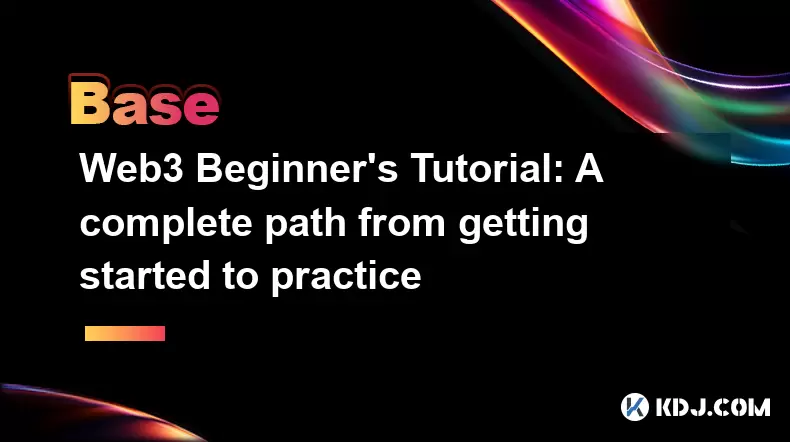
Web3 Beginner's Tutorial: A complete path from getting started to practice
Embarking on your journey into the world of Web3 can be both exciting and daunting. This beginner's tutorial aims to guide you through the essential steps to understand and engage with Web3 technologies. From the basics of blockchain to practical applications, this comprehensive guide will help you navigate the decentralized landscape.
Understanding the Basics of Web3
Before diving into the practical aspects, it's crucial to grasp the foundational concepts of Web3. Web3, often referred to as the decentralized web, is built on blockchain technology and aims to provide a more open, transparent, and secure internet. Unlike Web2, where centralized entities control data and services, Web3 empowers users with ownership and control over their digital assets and data.
Blockchain is the underlying technology that enables Web3. It is a distributed ledger that records transactions across numerous computers, ensuring that the data is immutable and transparent. Cryptocurrencies like Bitcoin and Ethereum are the most well-known applications of blockchain, but the technology extends far beyond digital currencies.
To get started with Web3, you need to familiarize yourself with key terms such as decentralized applications (dApps), smart contracts, and decentralized finance (DeFi). dApps are applications that run on a blockchain, smart contracts are self-executing contracts with the terms directly written into code, and DeFi refers to financial services built on blockchain technology.
Setting Up Your Web3 Environment
To begin your practical journey into Web3, you'll need to set up your environment. This involves installing necessary software and setting up wallets to interact with the blockchain.
- Install a Web3 Browser Extension: Begin by installing a Web3 browser extension such as MetaMask. This extension allows you to interact with dApps and manage your cryptocurrency wallets directly from your browser. Visit the MetaMask website, download the extension for your browser, and follow the installation prompts.
- Create a Cryptocurrency Wallet: Once the extension is installed, create a new wallet. You'll be prompted to set a password and generate a seed phrase. Securely store your seed phrase, as it is crucial for recovering your wallet if you lose access.
- Fund Your Wallet: To interact with dApps and the blockchain, you'll need to fund your wallet with cryptocurrency. You can purchase cryptocurrency from exchanges like Coinbase or Binance and transfer it to your MetaMask wallet.
Exploring Decentralized Applications (dApps)
With your environment set up, you can start exploring dApps. These applications run on blockchain networks and offer various services, from gaming to finance. To get started:
- Navigate to a dApp Directory: Websites like DappRadar or State of the DApps provide comprehensive directories of available dApps. Browse through these directories to find dApps that interest you.
- Connect Your Wallet: When you find a dApp you want to use, connect your MetaMask wallet to the application. This allows the dApp to interact with your wallet and execute transactions on the blockchain.
- Interact with the dApp: Depending on the dApp, you can engage in various activities such as trading tokens, participating in decentralized finance protocols, or playing blockchain-based games. Follow the on-screen instructions to interact with the dApp.
Understanding and Using Smart Contracts
Smart contracts are a critical component of Web3, enabling automated, trustless transactions on the blockchain. To understand and use smart contracts:
- Learn Solidity: Solidity is the programming language used to write smart contracts on the Ethereum blockchain. Start by learning the basics of Solidity through online courses or tutorials available on platforms like Coursera or Udemy.
- Use a Development Environment: Set up a development environment like Remix or Truffle to write and deploy smart contracts. Remix is a web-based IDE that allows you to write, deploy, and test smart contracts directly in your browser.
- Deploy a Smart Contract: Once you've written your smart contract, deploy it to the Ethereum testnet to test its functionality. Use Remix or Truffle to deploy your contract and interact with it using your MetaMask wallet.
- Interact with Deployed Contracts: After testing, you can deploy your smart contract to the mainnet. Use tools like Etherscan to view and interact with your deployed contract.
Engaging with Decentralized Finance (DeFi)
Decentralized Finance (DeFi) is a rapidly growing sector within Web3, offering financial services without intermediaries. To engage with DeFi:
- Understand Key Concepts: Familiarize yourself with DeFi terminology such as yield farming, liquidity pools, and token swaps. These concepts are essential for navigating DeFi platforms.
- Choose a DeFi Platform: Popular DeFi platforms include Uniswap, Aave, and Compound. Visit these platforms and explore their offerings to understand how they work.
- Connect Your Wallet: Connect your MetaMask wallet to the DeFi platform of your choice. This allows you to interact with the platform and execute transactions.
- Participate in DeFi Activities: Depending on the platform, you can engage in activities such as lending, borrowing, or trading tokens. Follow the platform's instructions to participate in these activities and manage your assets.
Frequently Asked Questions
What is the difference between Web2 and Web3?
Web2 refers to the current state of the internet, characterized by centralized control over data and services by large tech companies. Web3, on the other hand, aims to decentralize the internet using blockchain technology, giving users more control over their data and digital assets.
How secure is a Web3 wallet?
Web3 wallets like MetaMask are designed to be secure, using encryption and private keys to protect your assets. However, the security of your wallet also depends on how well you protect your seed phrase and private keys. It's crucial to store these securely and never share them with anyone.
Can I use Web3 on mobile devices?
Yes, you can use Web3 on mobile devices. There are mobile versions of Web3 wallets like MetaMask, and many dApps are optimized for mobile use. You can download the MetaMask app from the App Store or Google Play and set up your wallet on your mobile device.
What are some risks associated with DeFi?
DeFi platforms, while offering innovative financial services, come with risks such as smart contract vulnerabilities, impermanent loss in liquidity pools, and market volatility. It's important to thoroughly research and understand these risks before participating in DeFi activities.
Disclaimer:info@kdj.com
The information provided is not trading advice. kdj.com does not assume any responsibility for any investments made based on the information provided in this article. Cryptocurrencies are highly volatile and it is highly recommended that you invest with caution after thorough research!
If you believe that the content used on this website infringes your copyright, please contact us immediately (info@kdj.com) and we will delete it promptly.
- Crypto ROI Revolution: Is BFX the Next Big Thing?
- 2025-07-16 21:30:13
- Dogecoin, HBAR, and Partnerships: A Tale of Memes vs. Utility
- 2025-07-16 21:30:13
- Cha-Ching! That £2 Coin Could Be Worth a Mint!
- 2025-07-16 22:10:12
- Meme Coin Mania Meets Crypto Payroll & Burger Bites: A New York Minute on the Latest Trends
- 2025-07-16 22:10:13
- China Gold Market: Investment and Focus in 2025
- 2025-07-16 22:15:13
- FxWirePro: Token Unlock Tsunami – Navigating the ARBUSD Waters
- 2025-07-16 22:15:13
Related knowledge
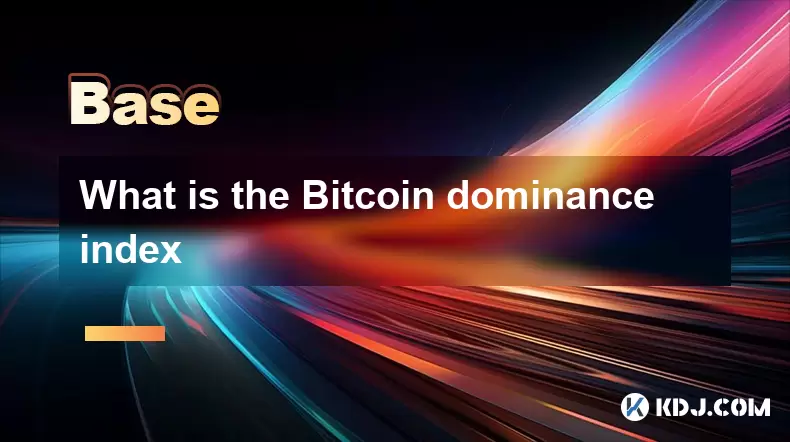
What is the Bitcoin dominance index
Jul 12,2025 at 10:35pm
Understanding the Bitcoin Dominance IndexThe Bitcoin Dominance Index, often abbreviated as BTC.D, is a metric used to measure Bitcoin's market capital...
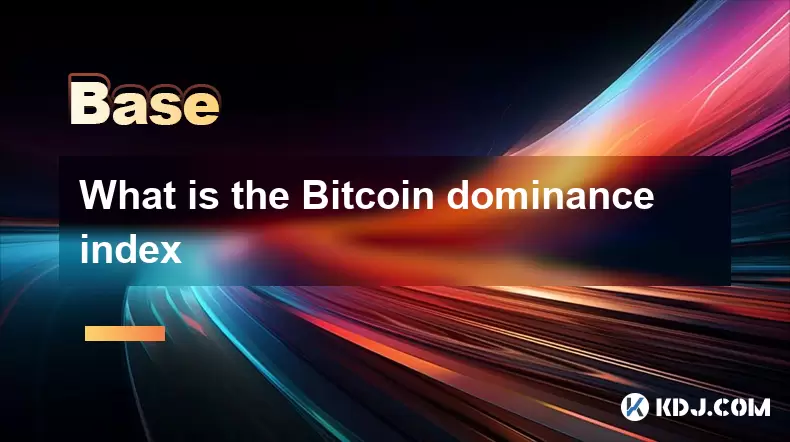
What is the Bitcoin dominance index
Jul 11,2025 at 04:29am
What is the Bitcoin Dominance Index?The Bitcoin Dominance Index is a metric used to gauge Bitcoin's market capitalization relative to the total market...
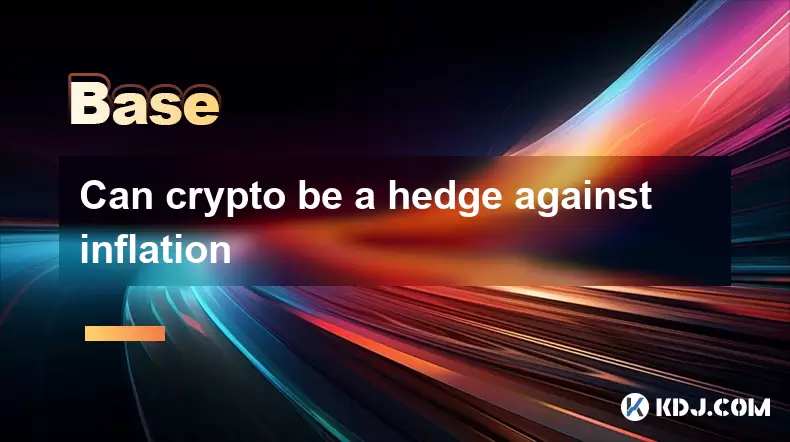
Can crypto be a hedge against inflation
Jul 14,2025 at 12:21am
Understanding the Concept of Hedging Against InflationInflation refers to the general increase in prices and fall in the purchasing value of money ove...
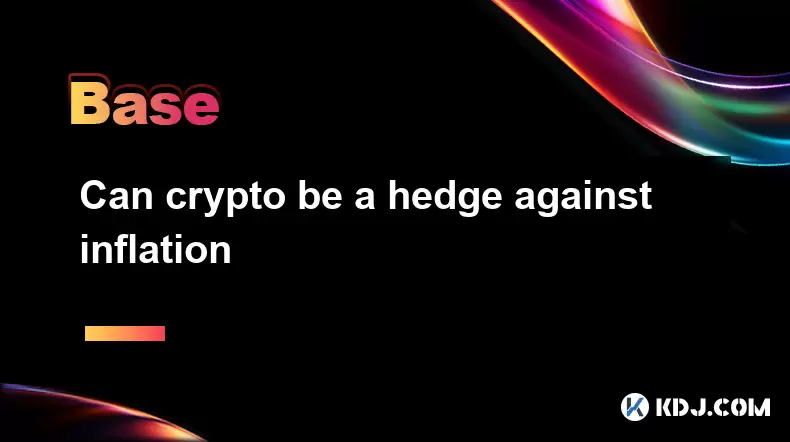
Can crypto be a hedge against inflation
Jul 12,2025 at 12:07pm
Understanding the Role of Blockchain in Decentralized Finance (DeFi)Blockchain technology serves as the backbone of decentralized finance, offering a ...
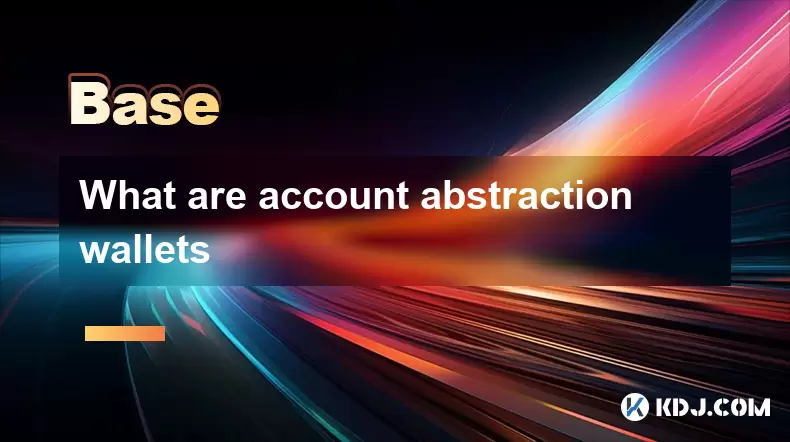
What are account abstraction wallets
Jul 13,2025 at 01:43am
Understanding the Concept of Account AbstractionAccount abstraction is a term frequently used in the Ethereum ecosystem, particularly within discussio...
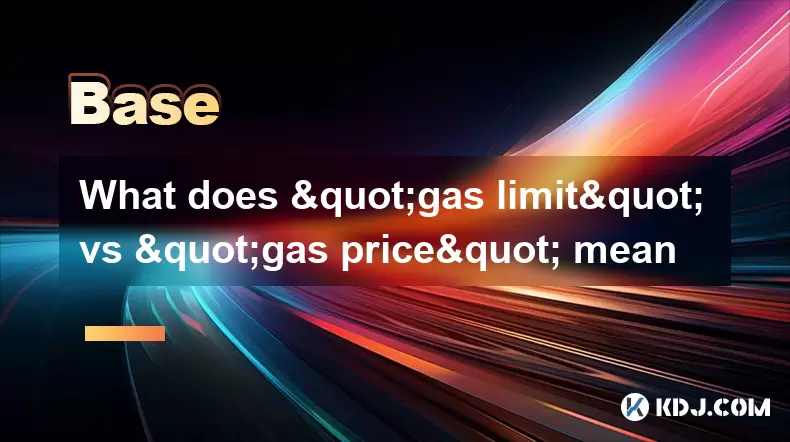
What does "gas limit" vs "gas price" mean
Jul 13,2025 at 04:00am
Understanding the Basics of Gas in Blockchain TransactionsIn the Ethereum and other EVM-compatible blockchains, every transaction requires computation...

What is the Bitcoin dominance index
Jul 12,2025 at 10:35pm
Understanding the Bitcoin Dominance IndexThe Bitcoin Dominance Index, often abbreviated as BTC.D, is a metric used to measure Bitcoin's market capital...

What is the Bitcoin dominance index
Jul 11,2025 at 04:29am
What is the Bitcoin Dominance Index?The Bitcoin Dominance Index is a metric used to gauge Bitcoin's market capitalization relative to the total market...

Can crypto be a hedge against inflation
Jul 14,2025 at 12:21am
Understanding the Concept of Hedging Against InflationInflation refers to the general increase in prices and fall in the purchasing value of money ove...

Can crypto be a hedge against inflation
Jul 12,2025 at 12:07pm
Understanding the Role of Blockchain in Decentralized Finance (DeFi)Blockchain technology serves as the backbone of decentralized finance, offering a ...

What are account abstraction wallets
Jul 13,2025 at 01:43am
Understanding the Concept of Account AbstractionAccount abstraction is a term frequently used in the Ethereum ecosystem, particularly within discussio...

What does "gas limit" vs "gas price" mean
Jul 13,2025 at 04:00am
Understanding the Basics of Gas in Blockchain TransactionsIn the Ethereum and other EVM-compatible blockchains, every transaction requires computation...
See all articles























